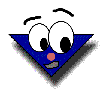Other Proprietary Interfaces
Shortly before the appearance of MIDI, Roland came up with their own
digital, polyphonic control system, known as DCB. DCB only appeared on
two synths (the Juno-60 and Jupiter-8), a sequencer (the MSQ-700), and
a MIDI->DCB convertor (the MD-8). DCB provides basic note on/off control
similar to MIDI. Although the MSQ-700 can do MIDI and DCB sequencing,
it cannot do both at once, and it cannot sync to MIDI while sending
DCB (but it can sync to DIN Sync).
Kenton's Pro-4 also
converts from MIDI to DCB.
Oberheim used some control system of their own for a while as well.
The OB-8, OB-X, OB-Xa, DSX, and DMX all used it. In fact, you can only enter
sequences into the DSX sequencer via this interface using an OB-8, OB-X or
OB-Xa.

